Balsamic glazed steak and veggie bowls are the warm, comfort meal you need on a cold day. They are filled with hearty ingredients, from the sirloin steak to the nutritious vegetables. These power bowls are packed with protein and keep you full for hours. Yet, they’re light and healthy. It’s the perfect meal for both the meat lover and the veggie connoisseur. And, since “bowls” are all the rage right now, they’re most definitely on trend!
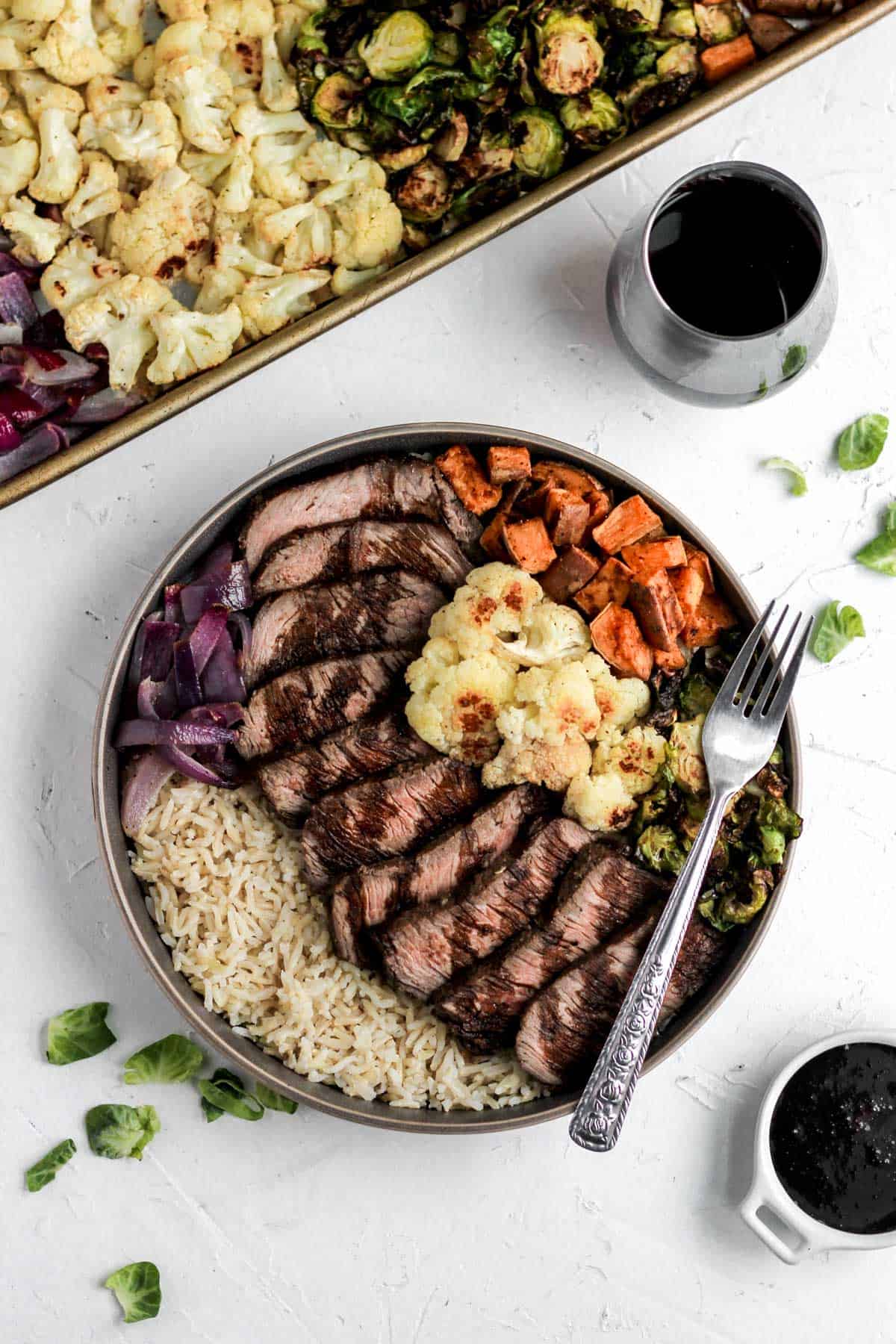
What makes these balsamic glazed steak and veggie bowls so good?!
Balsamic glazed steak and veggie bowls are a jazzy version of a beef and rice bowl. Instead of your bland ground beef or plain grilled steak, the steak fillets are marinated in a blend of flavor-packed ingredients. From the chili powder and coffee granule rub to the balsamic vinegar and red wine marinade, the steak soaks in all the wonderful flavors and stays incredibly moist.
The salt and acids in the marinade aid in breaking down the proteins in the steak, helping it become incredibly juicy and tender, just like my balsamic marinated cajun steak bites. Luckily, most of the marinade ingredients are pantry staples too, so it’s super easy to throw it all together when you’re in a rush.
Likewise, the roasted fall vegetables help to round out the meal, but only take minutes to prepare and are super quick and easy to roast in the oven. The brussels sprouts get nice and crispy, as the sweet potatoes turn a beautiful golden brown. The red onion and cauliflower help to add more vitamins and minerals into the meal, while imparting their own flavors on the dish.
And lastly, that oh-so-good balsamic glaze really jazzes things up. It pairs effortlessly with the balsamic marinated steak and mimics the inherent sweetness of the sweet potatoes, while adding its own tanginess. Each component comes together and truly makes this steak and veggie bowl, beef and rice bowl, protein bowl, power bowl, healthy bowl-- whatever you want to call it!-- one of the absolute best sirloin steak recipes!
Ingredients
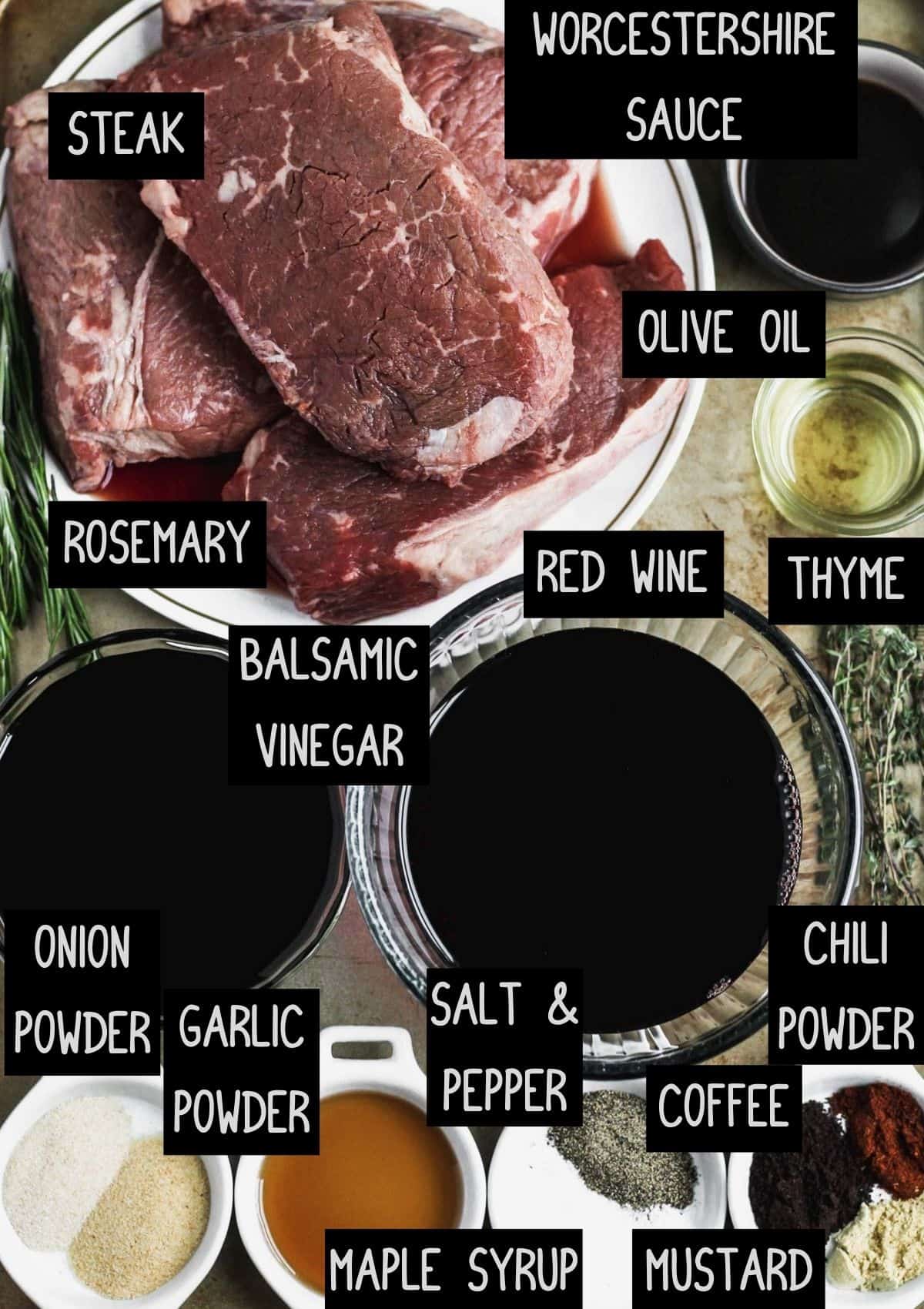
For the Balsamic Steak Marinade:
- Steak Fillets, preferably New York Strip Steak or equivalent
- Salt & Pepper
- Garlic Powder
- Onion Powder
- Ground Mustard
- Chili Powder
- Coffee Granules
- Dry Red Wine
- Balsamic Vinegar
- Worcestershire Sauce
- Maple Syrup
- Olive Oil, plus extra for cooking
- Fresh Rosemary
- Fresh Thyme
- Brown Rice, cooked according to the package instructions
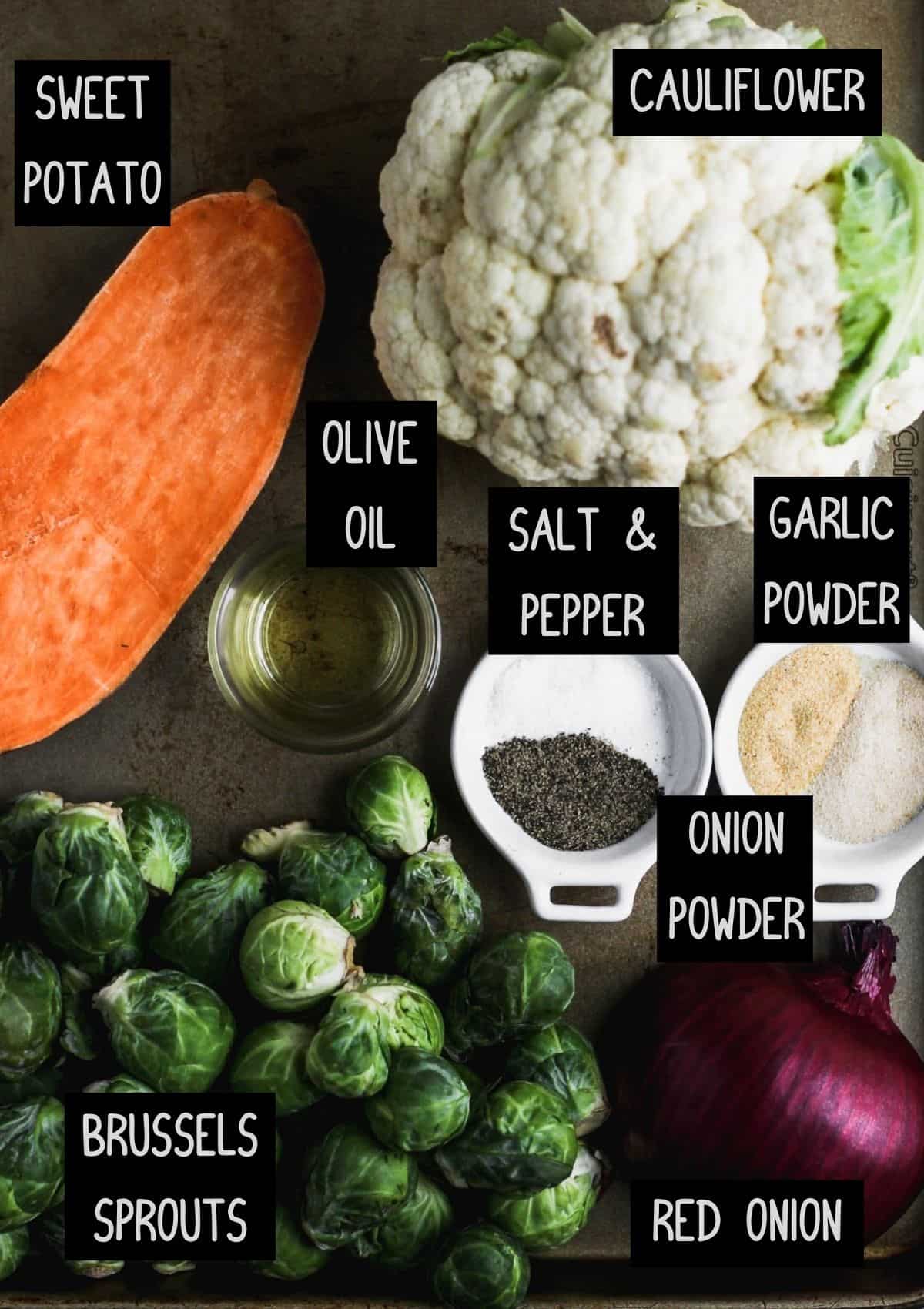
For the Roasted Fall Vegetables:
- Sweet Potato, cubed
- Brussels Sprouts, trimmed and sliced
- Red Onion, sliced
- Cauliflower, florets
- Olive Oil
- Garlic Powder
- Onion Powder
- Salt & Pepper
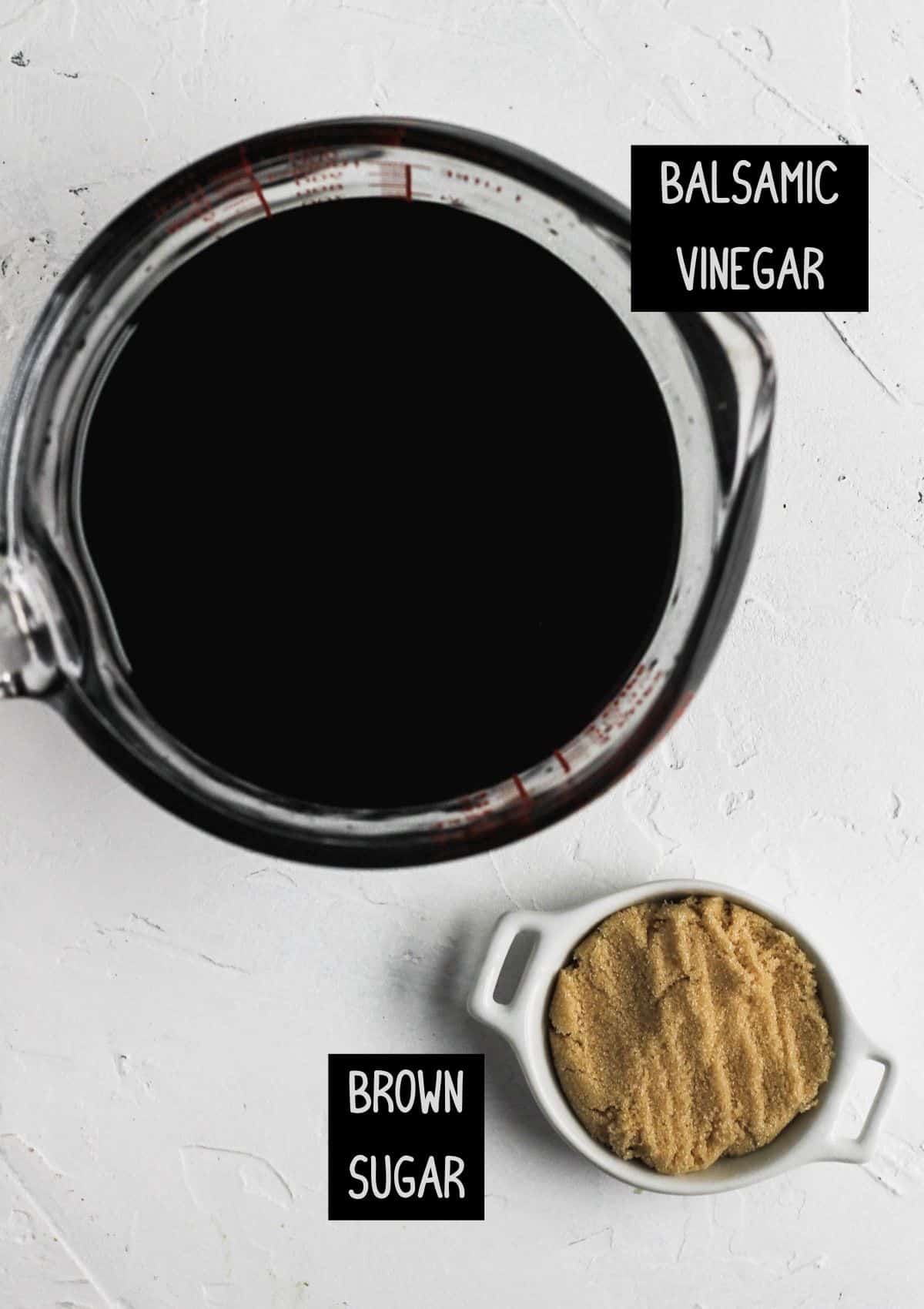
For the Balsamic Glaze:
- Balsamic Vinegar
- Brown Sugar, optional
A few notes about the ingredients:
- Because of the nature of the marinade, you do not need a super high quality cut of steak. If you allow the steak to marinate overnight, it should still become incredibly tender no matter if it’s New York Strip or a cheap cut of sirloin. So, feel free to purchase the kind of steak that is within your budget, but be sure to give it plenty of time to marinate and tenderize before cooking.
- Ground mustard can be found in the spice and seasonings aisle of the grocery store. It is a yellow powder.
- Coffee granules may seem odd as a steak seasoning but they truly pair incredibly well with the richness of the steak. The acidity in the coffee helps to tenderize the steak, as well as amplify it’s flavor.
- You can choose to roast any vegetables that your family enjoys best. In creating this recipe, I chose vegetables that were in season at the time of writing.
- Make sure to purchase a high quality balsamic vinegar for this recipe. Higher quality vinegars reduce into a smoother, less pungent sauce.
How do you make balsamic glazed steak and veggie bowls?
For the Balsamic Steak:
Start by trimming any excessive fat off your steak fillets. You can leave a little bit on for flavor, but I often choose to remove most of it. Season both sides of the fillets with the dry seasonings, including the coffee granules, and add them to a plastic zip top bag, baking dish, or shallow bowl. Top with the rest of the marinade ingredients besides the rosemary and thyme. Mix it all together to coat the steak. Marinate for at least 1 hour, but preferably overnight.
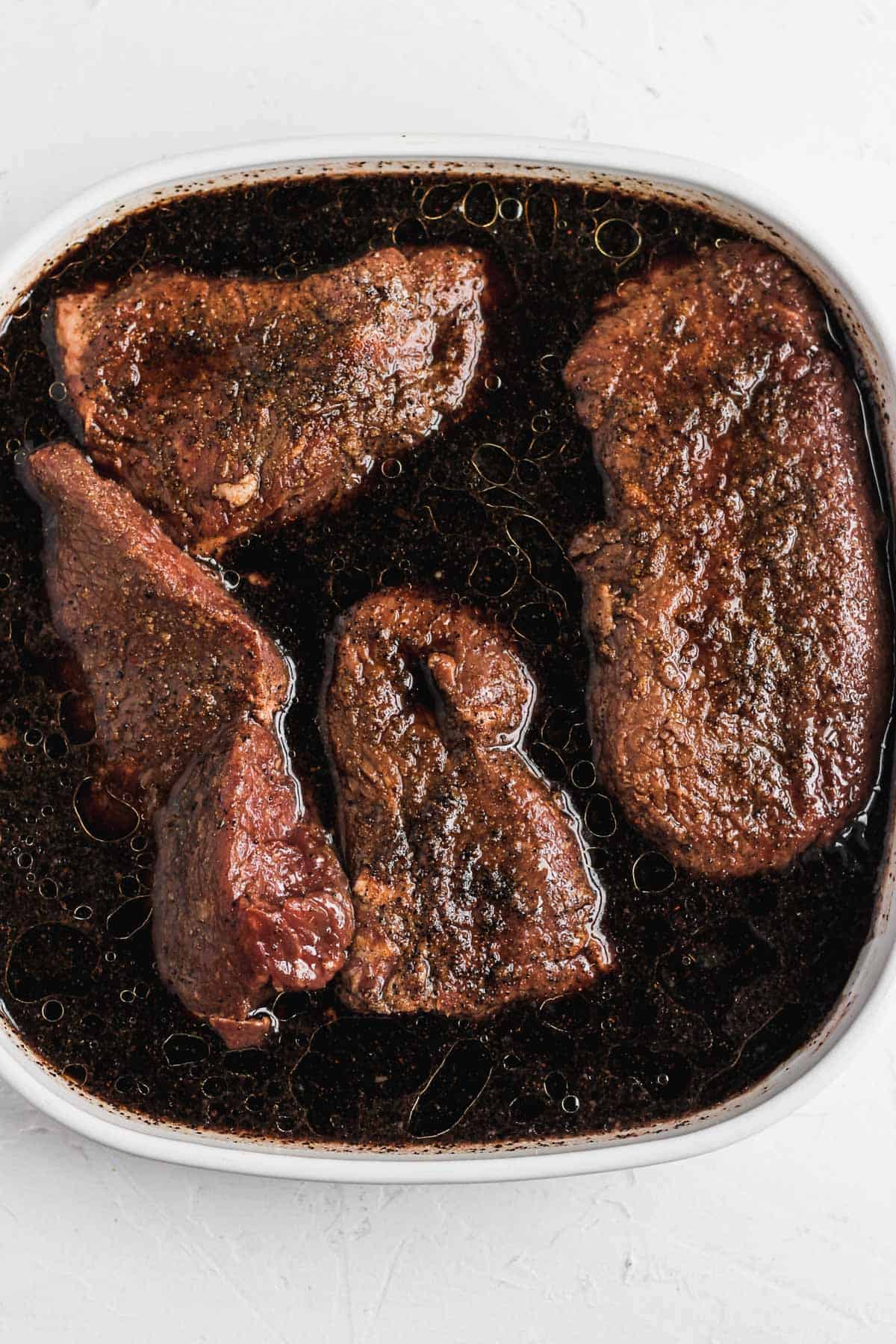
Preheat your oven to 425 degrees F. When the steak is done marinating, allow it to sit at room temperature for 30 minutes before cooking. Remove it from the liquid marinade and set it on a paper towel lined plate. To make sure the steak sears perfectly golden brown, instead of steaming and becoming chewy, pat the steak dry just before cooking.
Heat an oven safe pan, like a cast iron skillet, over medium heat. Add a drizzle of olive oil. When the oil is hot, add the steak, rosemary, and thyme. Allow the steak to cook undisturbed for about 5 minutes until it browns. Flip it and sear it for another 5 or so minutes on the other side. When both sides are a rich brown color, place the skillet in the oven to allow the center to cook. Depending on the thickness of your steak, this may take less than 10 minutes.
Using a meat thermometer, check the internal temperature of your steak. It should be 130-135 degrees F for rare, 140 degrees F for medium rare, 155 degrees F for medium, and 165 degrees F for well done. Remove the steak from the oven when it reaches your desired temperature.
Allow the steak to rest 5 to 10 minutes off the heat before slicing it against the grain.
For the Fall Vegetables:
While the steak cooks, prepare 2 sheet pans with aluminum foil and spray them with nonstick spray. Add your cut vegetables to each of the sheet pans. Give the vegetables plenty of space to get nice and crispy. Drizzle with olive oil and season them with the dry seasonings. Using tongs or your hands, mix the seasoning to fully coat the veggies.
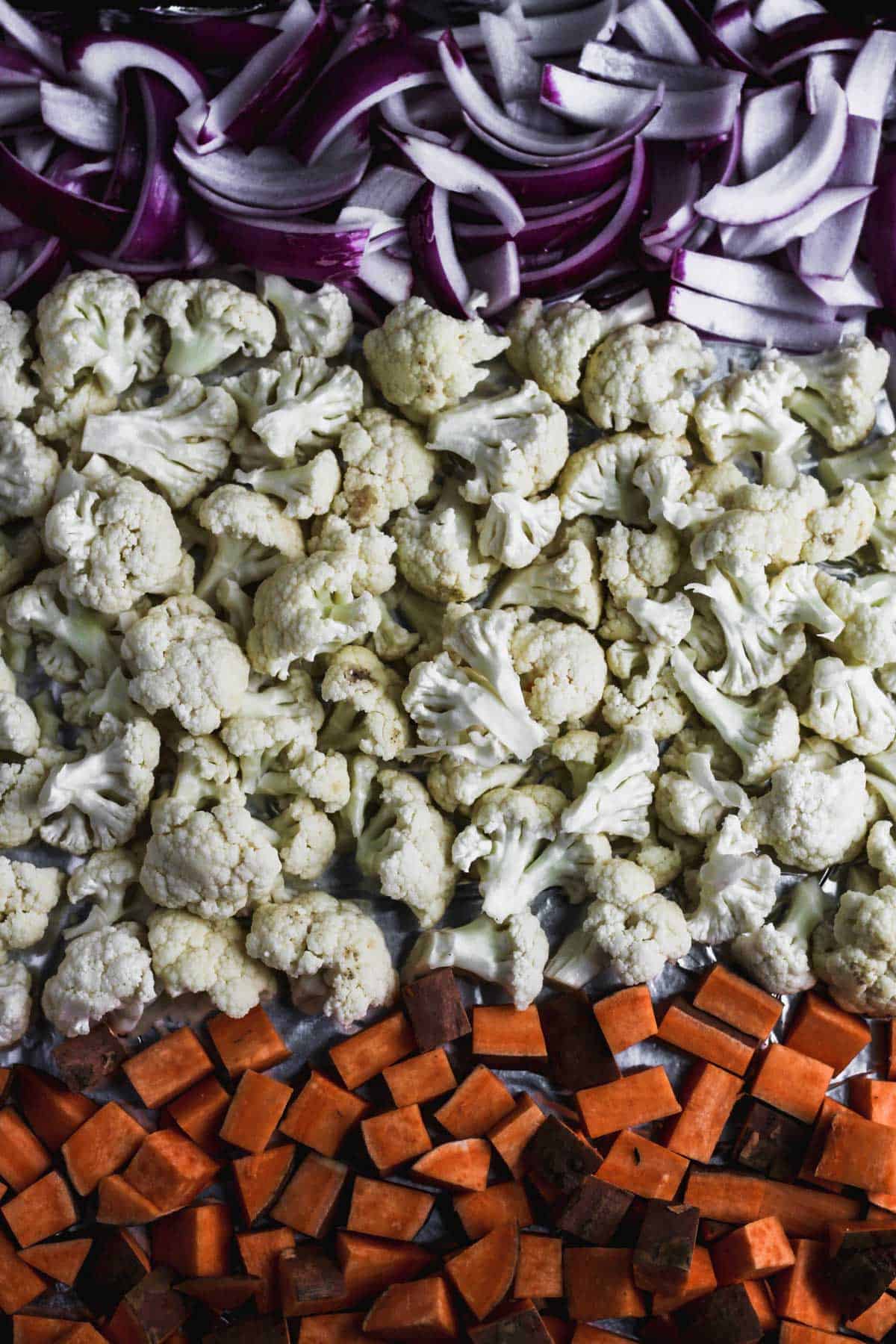
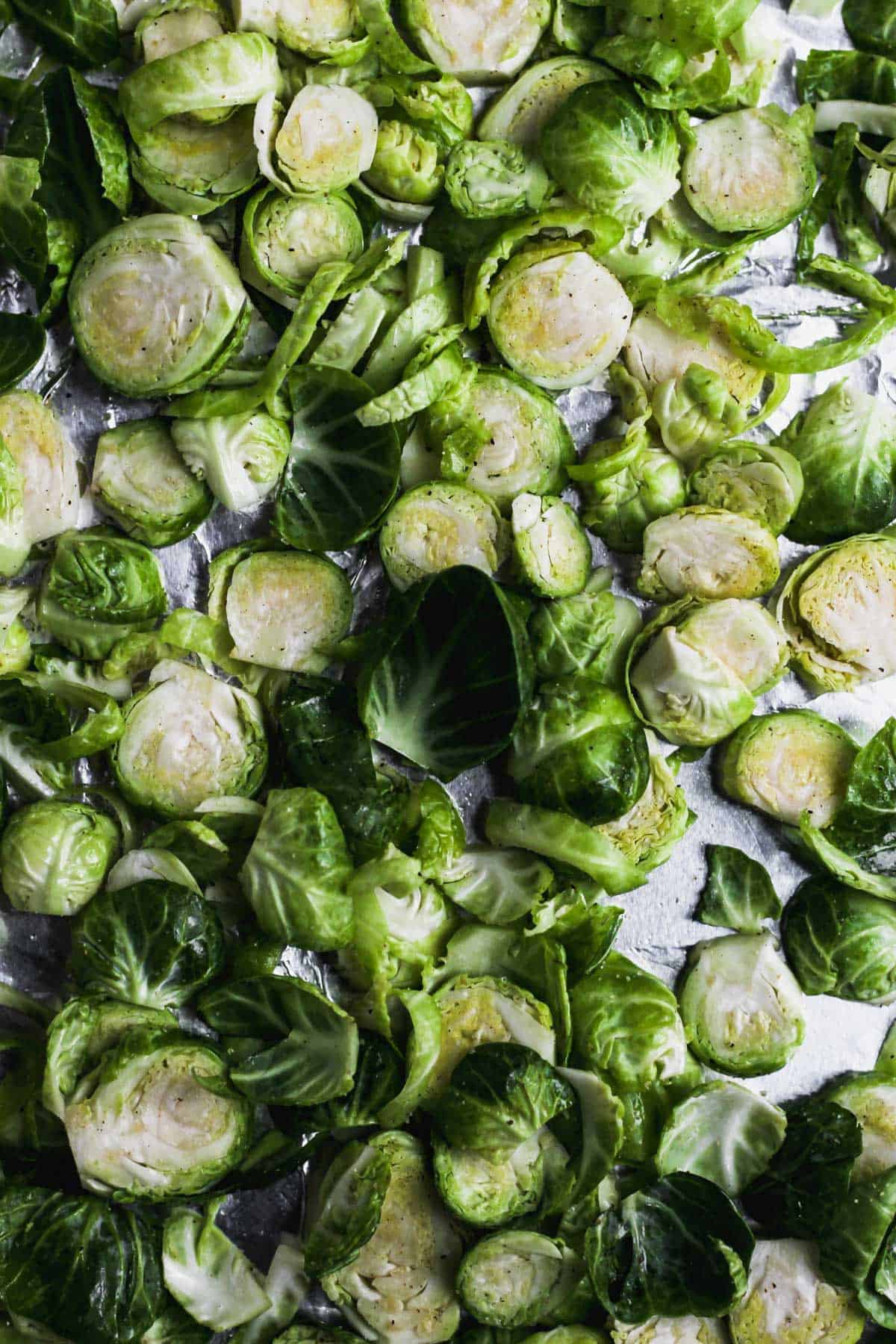
Roast the vegetables at 425 degrees F. Give the brussels sprouts a toss after 5 minutes to prevent them from burning. Allow them to cook another 5 minutes, then remove them from the oven (10 minutes total). Remove the cauliflower and red onion 10 minutes later (20 minutes total). Give the sweet potatoes a toss to brown on both sides and cook them another 10 minutes (30 minutes total).
To Make the Balsamic Glaze:
Combine the balsamic vinegar and brown sugar in a saucepan over medium heat. Bring it to a simmer and allow it to cook 10-20 minutes until it’s thick enough to coat the back of a spoon. As it cools, it’ll thicken even more.
Putting it All Together:
Serve the balsamic glazed steak and fall vegetables over brown rice. Top the rice with some of the sliced balsamic steak and a portion of veggies. Drizzle the balsamic reduction over the top.
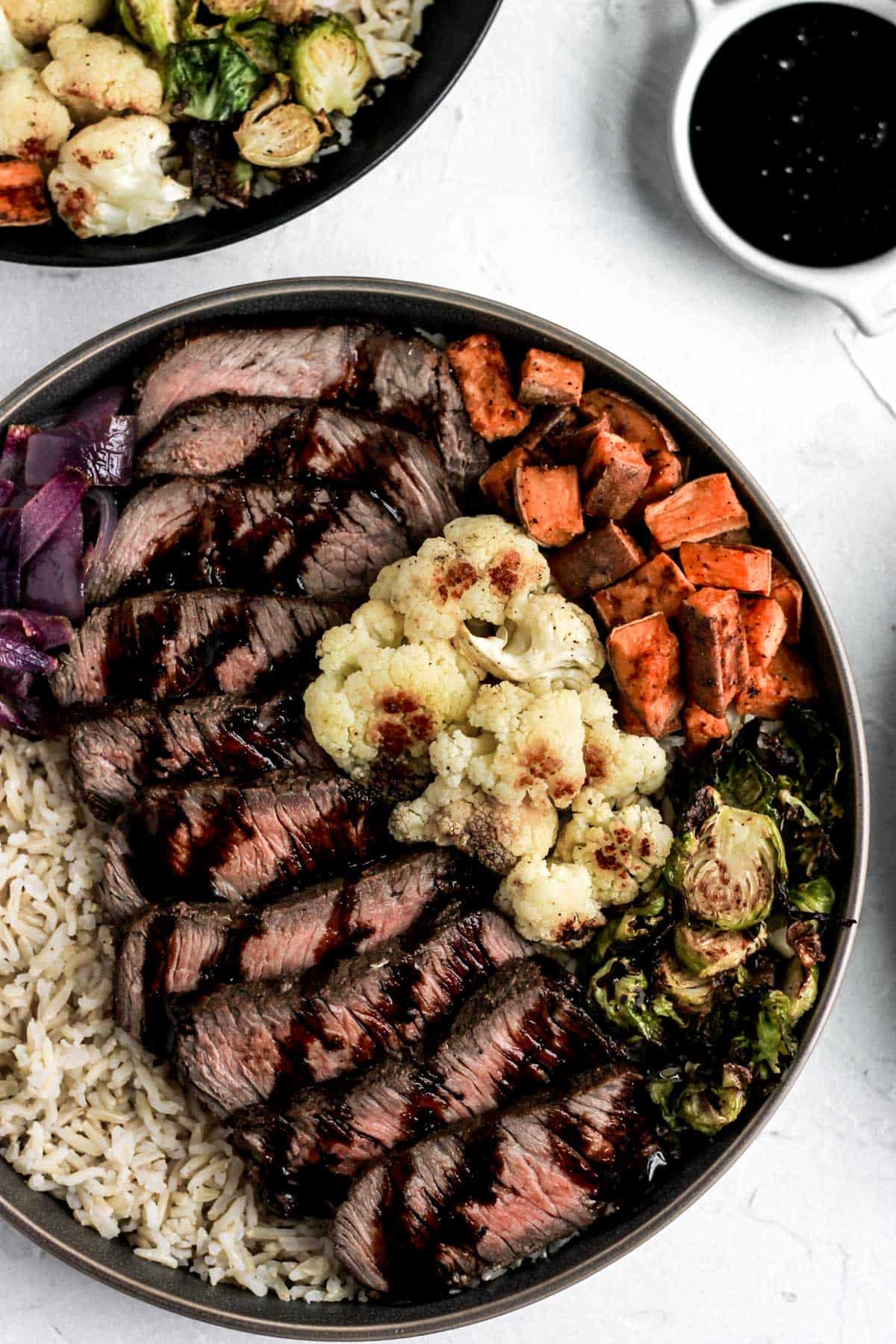
What else can you put balsamic glaze on?
Balsamic glaze, also called balsamic reduction, can be put on many different things. It is often paired with steak, but can also be used on grilled chicken, salmon, and pork. It also tastes great on vegetables, such as carrots, onions, zucchini, peppers, and broccoli. Commonly, it is used on a caprese salad which is composed of mozzarella cheese, sliced tomatoes, fresh basil, olive oil, and balsamic reduction.
How long does balsamic glaze last?
Balsamic glaze lasts a pretty long time. It can last 2-3 weeks in the refrigerator. To check if the glaze has gone bad, make sure there is no mold. Additionally, you can give it a small taste. It should be mildly acidic with a slight sweetness. If it’s too sharp and harsh on your tongue, it has most likely gone bad.
What makes these balsamic glazed steak and veggie bowls healthy?
Steak often gets a bad rap for being unhealthy for you. However, when eaten in moderation, it can be a great source of protein. It can also help to switch things up in your dinner routine if you often find yourself cooking chicken and fish day after day. Opt for leaner cuts of meat, such as sirloin steak, new york strip steak, filet mignon, flap or flank steak, and skirt steak. Trim the excess fat off the steak and drain any excess grease left in the pan after cooking to fully optimize the steak’s health potential.
Additionally, the diverse vegetables included in these protein-packed bowls range in color, which also means they range in the healthy nutrients that they offer. As well, the balsamic vinegar lends antioxidants, aides in digestion, and helps to lower cholesterol, while also providing a flavorful sauce that doesn’t weigh you or the dish down. It is cream-free, fairly low in sugar, and provides a level of sophistication to the overall dish.
One more tip
- If you’re not a fan of steak or just looking to switch things up, this recipe can be made with chicken breasts or chicken thighs, as well. For balsamic glazed chicken, I’d substitute the red wine in the marinade for a dry white wine instead.
- You will also need to adjust the cooking time so that the final internal temperature of the chicken reads 165 degrees F. Depending on the thickness of your chicken, you may not need to cook the balsamic chicken in the oven.
- Therefore, I’d check the internal temperature right after searing it on the stovetop. If it’s at 165 degrees, let it rest before slicing it. If it is below 165 degrees, place it in the oven for a few minutes until it reaches 165. Then, allow it to rest before slicing it and putting it onto your veggie bowl.
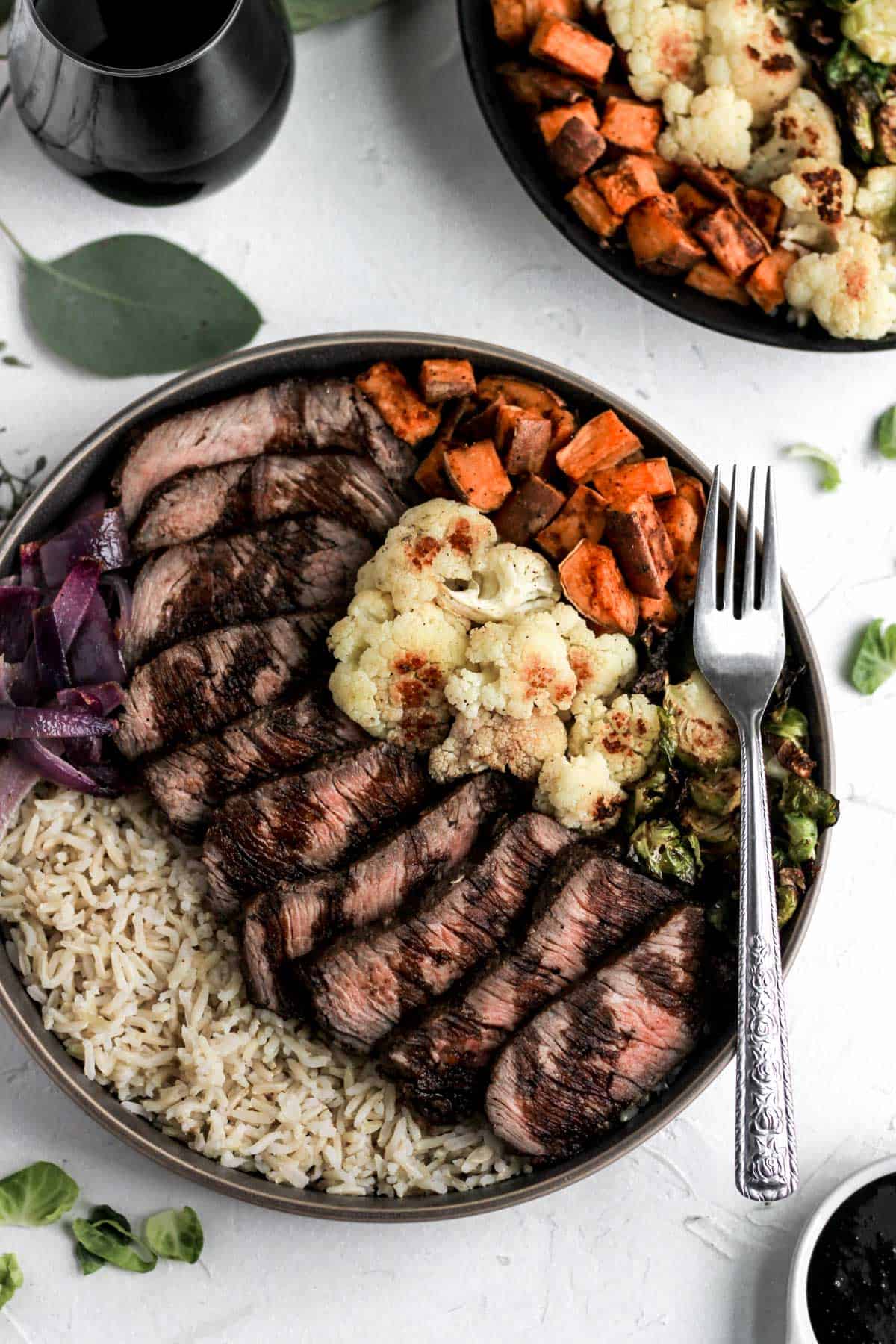
Looking for more healthy dinner recipes? Try these:
Share your cooking with me! If you make this recipe, I'd love to know! Tag @yourhomemadehealthy on Instagram or leave a comment with a rating and some feedback at the bottom of this page!
Recipe
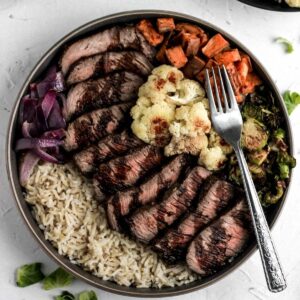
Easy Steak and Rice Bowl Recipe
Equipment
Ingredients
For the Balsamic Steak Marinade:
- 4 large steak fillets or 8 small (around 64 oz or 4 lbs total) preferably new york strip or equivalent
- 2 teaspoon salt
- 1 teaspoon pepper
- 1 teaspoon garlic powder
- 1 teaspoon onion powder
- ½ teaspoon ground mustard
- ½ teaspoon chili powder
- 1 teaspoon coffee granules
- ½ to 1 cup dry red wine enough to cover the steak
- 1 cup balsamic vinegar
- 1 tablespoon worcestershire sauce
- 1 tablespoon maple syrup
- 2 tablespoon olive oil plus extra for cooking
- 3 stems fresh rosemary
- 3 to 4 stems fresh thyme
- 3 cups uncooked brown rice cooked according to the package instructions
For the Roasted Fall Vegetables:
- 1 sweet potato cubed
- 16 oz brussels sprouts (1 lb) trimmed and sliced
- 1 red onion sliced
- 1 head cauliflower florets
- 2 tablespoon olive oil
- ½ teaspoon garlic powder
- ½ teaspoon onion powder
- ½ teaspoon salt
- ½ teaspoon pepper
For the Balsamic Glaze:
- 3 cups balsamic vinegar
- 2 tablespoon brown sugar optional
Instructions
For the Balsamic Steak:
- Start by trimming any excessive fat off your steak fillets. You can leave a little bit on for flavor, but I often choose to remove most of it. Season both sides of the fillets with the dry seasonings, including the coffee granules, and add the steak to a plastic zip top bag, baking dish, or shallow bowl.
- Top with the rest of the marinade ingredients, besides the rosemary and thyme. Mix it all together to coat the steak. Marinate for at least 1 hour, but preferably overnight.
- Preheat your oven to 425 degrees F. When the steak is done marinating, allow it to sit at room temperature for 30 minutes before cooking. Remove it from the liquid marinade and set it on a paper towel lined plate. To make sure the steak sears perfectly golden brown, instead of steaming and becoming chewy, pat the steak dry just before cooking.
- Heat an oven safe pan, like a cast iron skillet, over medium heat. Add a drizzle of olive oil. When the oil is hot, add the steak, rosemary, and thyme. Allow the steak to cook undisturbed for about 5 minutes until it browns. Flip it and sear it for another 5 or so minutes on the other side.
- When both sides are a rich brown color, place the skillet in the oven to allow the center to cook. Depending on the thickness of your steak, this may take less than 10 minutes.
- Using a meat thermometer, check the internal temperature of your steak. It should be 130-135 degrees F for rare, 140 degrees F for medium rare, 155 degrees F for medium, and 165 degrees F for well done. Remove the steak from the oven when it reaches your desired temperature.
- Allow the steak to rest 5 to 10 minutes off the heat before slicing it against the grain.
For the Fall Vegetables:
- While the steak cooks, prepare 2 sheet pans with aluminum foil and spray them with nonstick spray. Add your cut vegetables to each of the sheet pans. Give the vegetables plenty of space to get nice and crispy.
- Drizzle with olive oil and season with the dry seasonings. Using tongs or your hands, mix the seasoning to fully coat the veggies.
- Roast the vegetables at 425 degrees F. Give the brussels sprouts a toss after 5 minutes to prevent them from burning. Allow them to cook another 5 minutes, then remove them from the oven (10 minutes total). Remove the cauliflower and red onion 10 minutes later (20 minutes total). Give the sweet potatoes a toss to brown on both sides and cook them another 10 minutes (30 minutes total).
For the Balsamic Glaze:
- Combine the balsamic vinegar and brown sugar in a saucepan over medium heat. Bring it to a simmer and allow it to cook 10-20 minutes until it’s thick enough to coat the back of a spoon. As it cools, it’ll thicken even more.
Putting it All Together:
- Serve the balsamic glazed steak and fall vegetables over brown rice. Top the rice with some of the sliced balsamic steak and a portion of veggies. Drizzle the balsamic reduction over the top.
Notes
- Because of the nature of the marinade, you do not need a super high quality cut of steak. If you allow the steak to marinate overnight, it should still become incredibly tender no matter if it’s New York Strip or a cheap cut of sirloin. So, feel free to purchase the kind of steak that is within your budget, but be sure to give it plenty of time to marinate and tenderize before cooking.
- Ground mustard can be found in the spice and seasonings aisle of the grocery store. It is a yellow powder.
- Coffee granules may seem odd as a steak seasoning but they truly pair incredibly well with the richness of the steak. The acidity in the coffee helps to tenderize the steak, as well as amplify its flavor.
- You can choose to roast any vegetables that your family enjoys best. In creating this recipe, I chose vegetables that were in season at the time of writing.
- Make sure to purchase a high quality balsamic vinegar for this recipe. Higher quality vinegars reduce into a smoother, less pungent sauce.
- If you prefer chicken in this recipe instead of steak, see the added tip in the post above.
Nutrition
Want more recipes like this delivered right to your inbox? Be sure to subscribe below and never miss a thing!

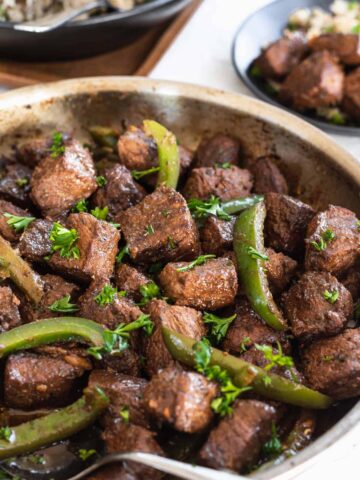
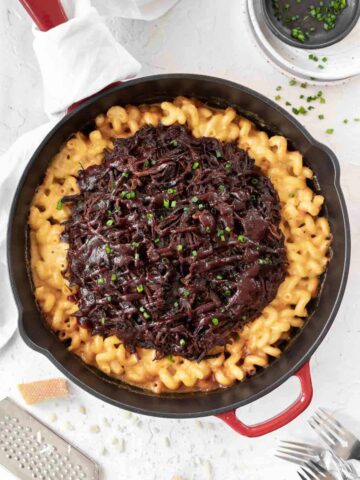
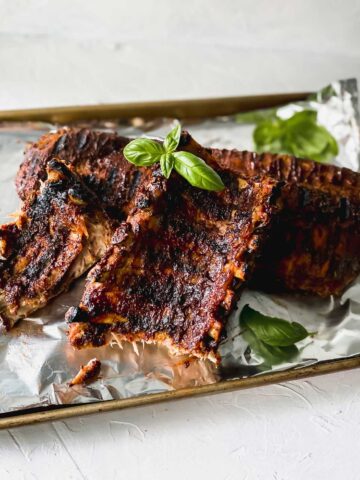
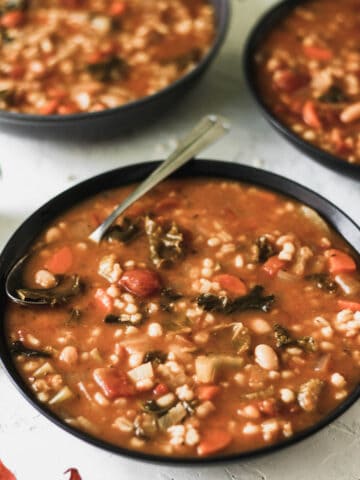
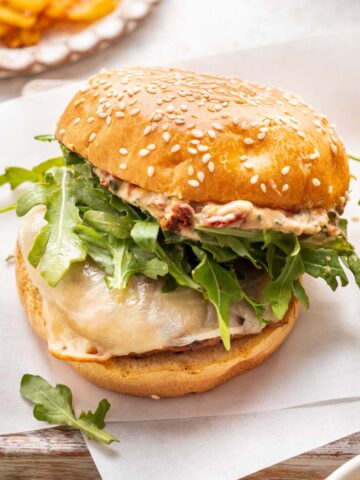
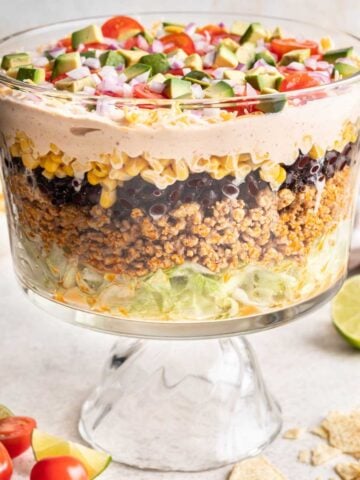
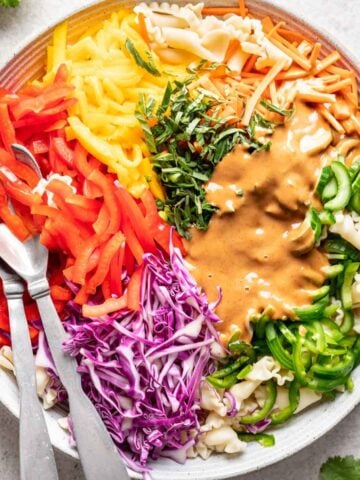
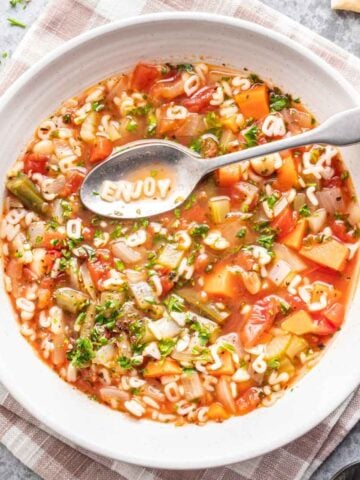

Katie
I have never made steak before and this was truly the most flavorful and incredible recipe. The marinade was creative and turned out so well. I would try again with chicken! Veggie cooking times were perfect. I grilled the steaks instead of oven but I’m sure both are great.
Alana Lieberman
YUM a grilled steak would definitely be just as delicious! And adding the marinade to chicken is a great idea as well 🙂